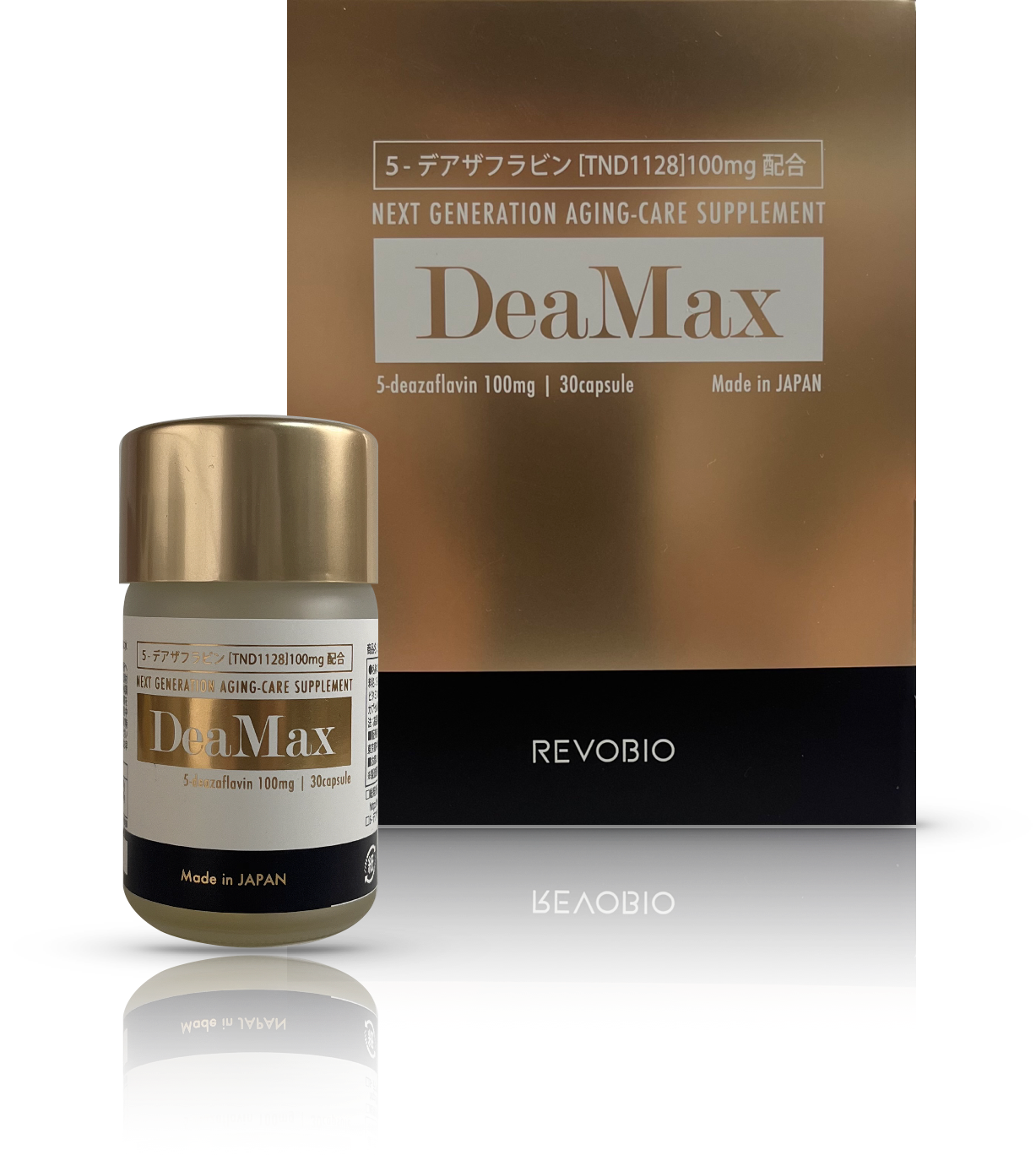Ultimate Anti-Aging Care
Think anti-aging at the cellular level.

(Fragrance-free, Colorant-free, Excipients-free, Manufactured in a GMP-certified, Made in Japan.)
Contains 100 mg of 5-deazaflavin [TND1128].
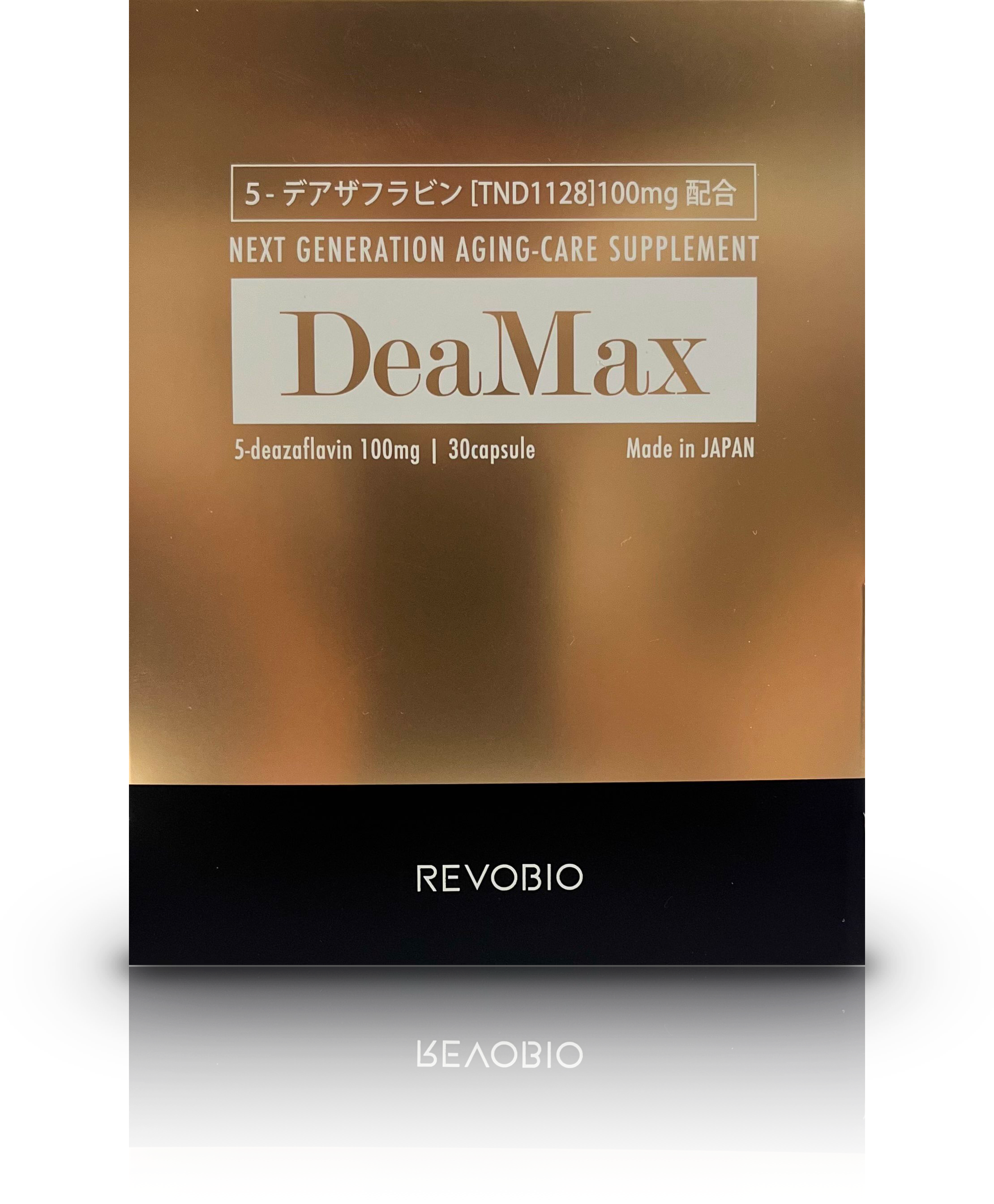 ■The concept of aging is changing.
■The concept of aging is changing.

Today, advances in science and technology have led to the discovery of the sirtuin gene, a longevity gene.
Aging" used to be an inevitable physiological phenomenon for human beings. However, once considered the greatest risk for many diseases, "aging" is now considered a disease to be treated.
The causes of aging, such as decreased mitochondrial activity and decreased sirtuin gene activity, are being discovered.
■Aging can be cured!
Aging, once considered the greatest risk for disease, is now a treatable disease.
As humans age, mitochondrial activity, which generates 95% of our bioenergy, declines.
The recent NMN boom has brought renewed attention to the mitochondrial activity capacity of 5-deazaflavin.
We focused on the stability and efficacy of 5-deazaflavin as an ingredient and created DeaMax as an anti-aging supplement with 5-deazaflavin as its main ingredient.
■How is DeaMax different from other supplements?
DeaMax" is different from other supplements in that it does not contain unnecessary ingredients. This means that we do not add any unnecessary ingredients.
We do not use dyes, or "excipients" (additives added to pharmaceuticals to make them easier to handle or form) that are often used in regular supplements.
Not using "excipients" means it is more difficult to formulate, but we dare to use only the active ingredients.
Reference price
■DeaMax (100mg x 30 tablets) 1 unit: 50,000 yen (excluding sales tax and shipping fee)
■DeaMax (100mg x 30 tablets) set of 4 : 196,000 yen (excluding sales tax and shipping fee)
What is the key ingredient in DeaMax?
5-Deazaflavin, a Next Generation Anti-Aging Ingredient
The key to anti-aging is mitochondrial activity.
■DeaMax keeps the mitochondria active!
The mitochondrial activity and sirtuin gene (longevity gene) activity of 5-deazaflavin, the key ingredient in DeaMax, is dozens of times greater than that of NMN, a similar mitochondrial activator.
[[ Properties of 5-deazaflavin, the main ingredient in DeaMax ]]
*Strong effect on the glycolytic system (ATP synthesis without oxygen)
*Sufficient energy supply even in the state of ischemia (lack of oxygen)
*Cells can maintain their functions and cell protection is increased.
DeaMax Specification
Anti-aging supplement with 5-deazaflavin
Ingredients: 5-deazaflavin [TND1128] (produced in Japan), Vitamin C, HPMC
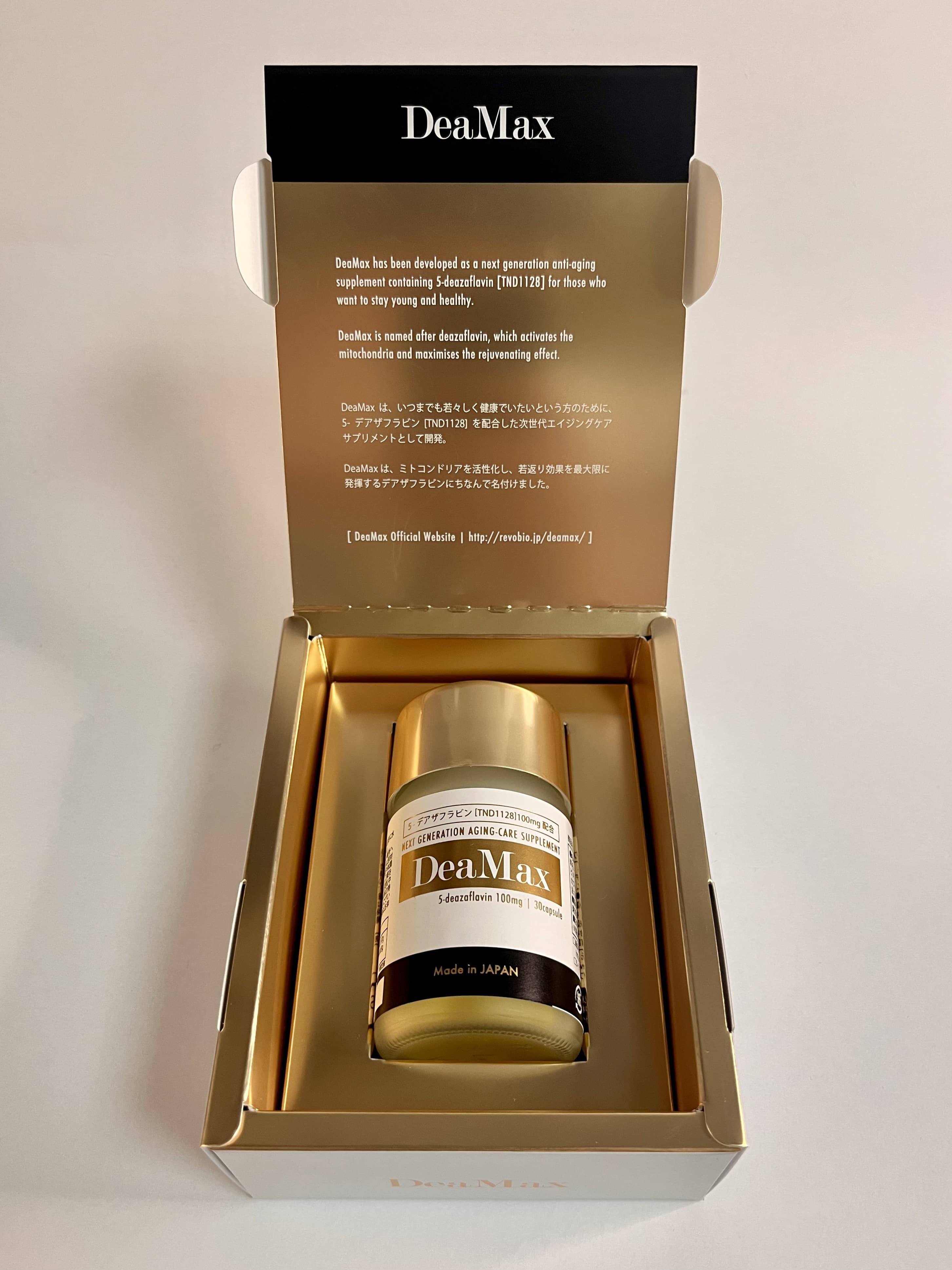
●Storage Method: Avoid high temperature, high humidity and direct sunlight.
●Precautions: Due to the characteristics of the raw materials used in this product, there may be slight changes in appearance, etc., but there are no quality problems.
●Fragrance-free, Colorant-free, Excipients-free, Manufactured in a GMP-certified, Made in Japan.
□Seller: Life Science Labs Corporation
□Exclusive distributor: Revobio co.,ltd.
□Inquiries: info@revobio.jp
□Patent on 5-deazaflavin: No. 671798
□Manufactured in a GMP-certified facility
□Made inJapan
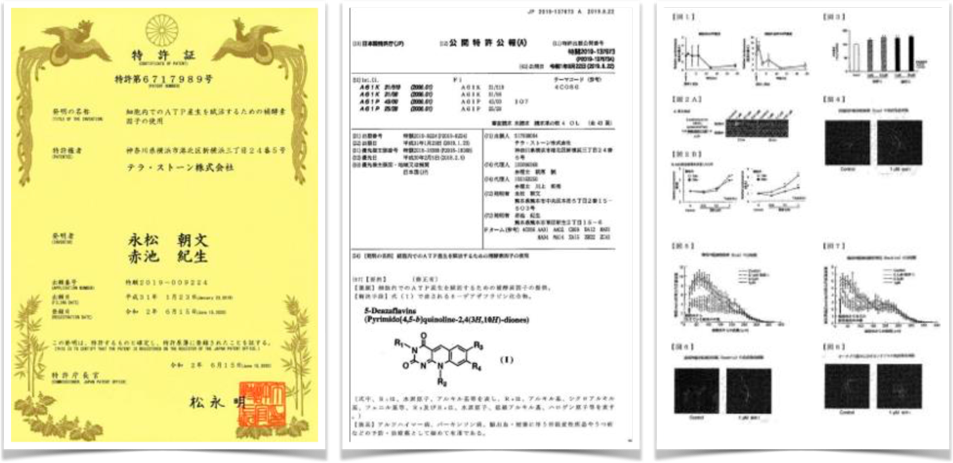
[Nutrition Facts Label: Per capsule (318mg)]
■Energy 0.83kcal
■Protein 0.01g
■Fat 0.0002g
■Carbohydrate 0.197g
■Salt Equivalent 0.0003g
*Estimated value
History of DeaMax Discovery and Research
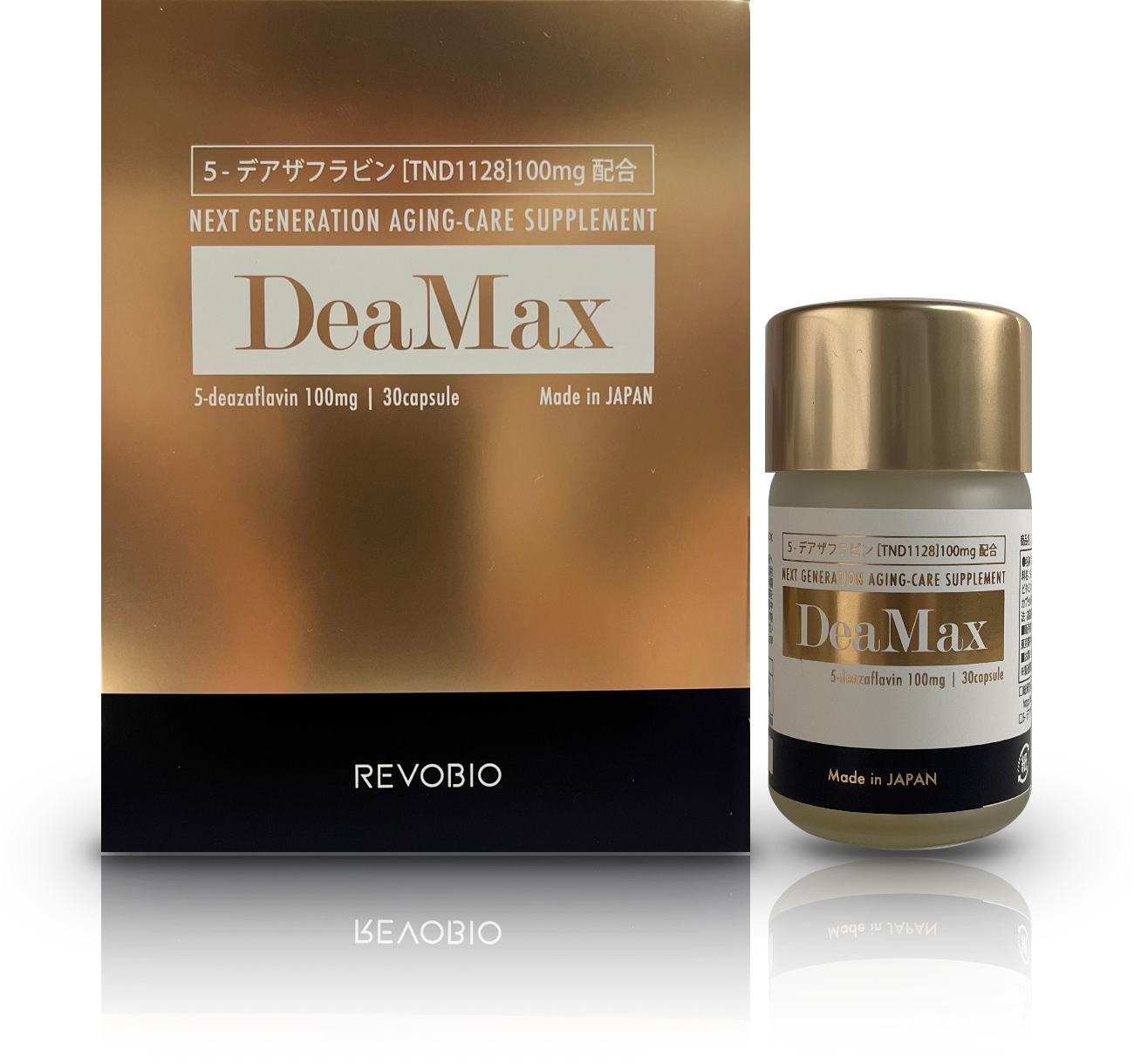
Just as NAD+ is converted to NMN (nicotinamide mononucleotide) in the body, 5-deazaflavin (F420) also appears in biochemistry textbooks as FMN (flavin mononucleotide).
An improved version of 5-deazaflavin (TND1128) is attracting attention in the NMN boom as a longevity component. It has been approved for an international patent because its mitochondrial activation is dozens of times stronger than NMN, and its other main function, activation of the sirtuin gene, is also several times stronger.
5-Deazaflavin is derived from flavin (vitamin B2) by replacing the aza group (nitrogen N element) at position 5 with a deaza substitution (carbon C element). This deaza substitution allows the vitamin B2 backbone, 5-deazaflavin, to function similarly to the vitamin B3 backbone, NMN/NAD +. The vitamin B2 backbone is chemically stable and 5-deazaflavin has multiple substituents that can be converted. 10 Patterns of conversion at each of the three sites allow for as many as 1000 adaptations, of which the best overall improved version was named TND1128.
In an experiment with rats in an oxygen-deprived state (7% oxygen concentration), activity (measured in steps) was 1.5 times greater with one-tenth the dose of NMN. This means that tissue and cell activity can be maintained under ischemic (acid deprivation) conditions. This means that 5-deazaflavin has a very high potential for use in the field of organ transplantation.
The effect of 5-deazaflavin is theoretically due to the activation of the sirtuin gene (longevity gene) and the activation of mitochondria. Although the public is not yet aware that aging is a treatable disease, there are many cases in which it is reasonable to believe that the administration of 5-deazaflavin has actually "cured" aging. For example, some patients have been able to discontinue antihypertensive medication after taking 5-deazaflavin internally for one month as a treatment for aging.
If the increase in blood pressure is caused by aging, antihypertensive medication is only a symptomatic treatment. However, if the aging process could be treated, the secondary hypertension would no longer require treatment.
In addition, other age-related syndromes such as diabetes, lipid abnormalities, cognitive decline, muscle weakness, renal decline (initiation of dialysis), and liver decline have been shown to have therapeutic effects, and observational research (approved by the Ethics Review Committee) is ongoing. It is also effective against scoliosis induced by physical stimulation and its hypothesized neuroprotective effects are being tested.
DeaMax Supervisor: Dr. Masato Inui
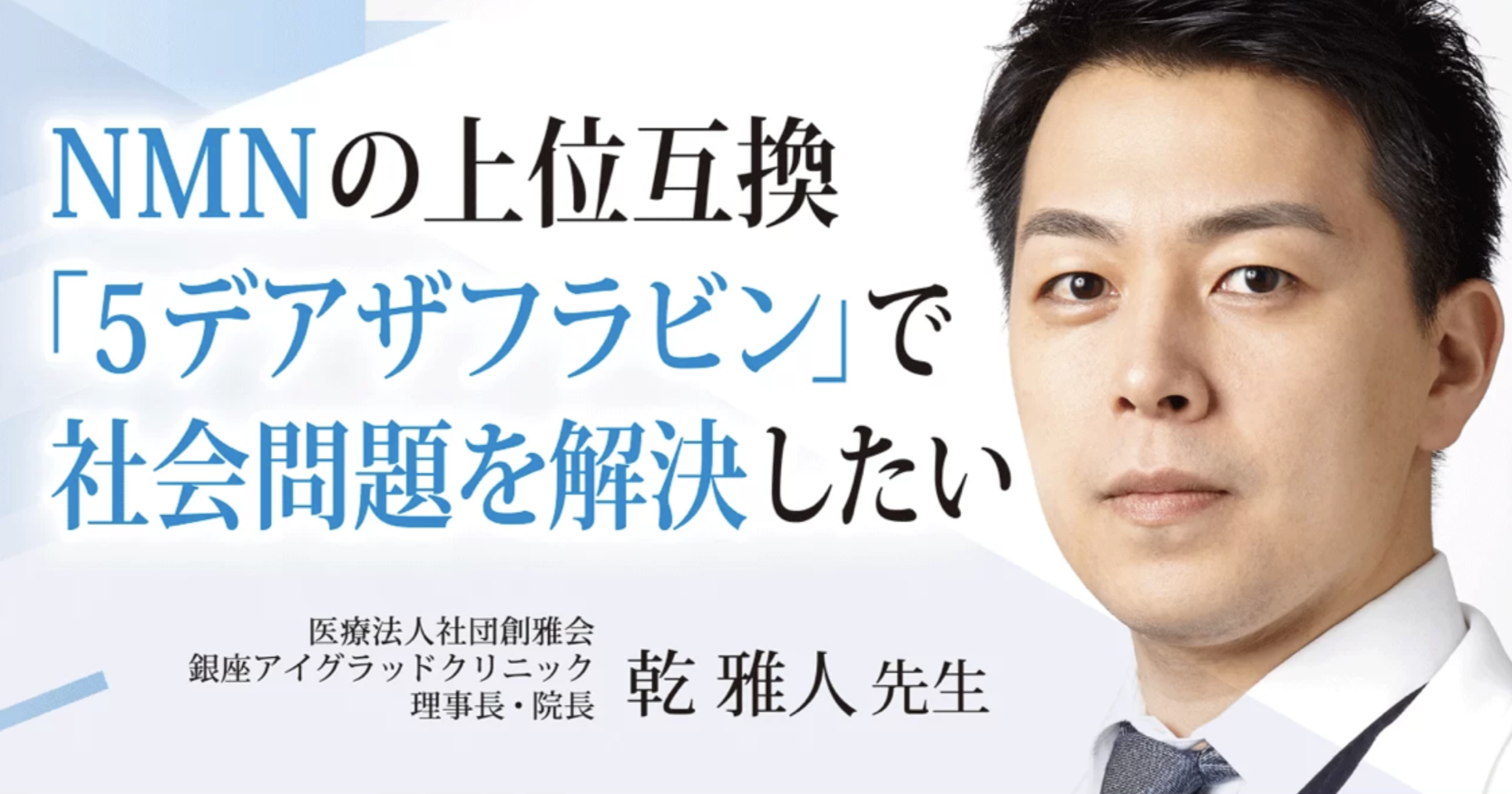
We want to solve social problems with "5-deazaflavin", a supercompatible of NMN.
Sogakai Medical Corporation
Ginza iGlad Clinic
Chairman and Director Dr. Masato Inui

Just as NAD+ is converted to NMN (nicotinamide mononucleotide) in the body, 5-deazaflavin (F420) also appears in biochemistry textbooks as FMN (flavin mononucleotide).
An improved version of 5-deazaflavin (TND1128) is attracting attention in the NMN boom as a longevity component. It has been approved for an international patent because its mitochondrial activation is dozens of times stronger than NMN, and its other main function, activation of the sirtuin gene, is also several times stronger.
5-Deazaflavin is derived from flavin (vitamin B2) by replacing the aza group (nitrogen N element) at position 5 with a deaza substitution (carbon C element). This deaza substitution allows the vitamin B2 backbone, 5-deazaflavin, to function similarly to the vitamin B3 backbone, NMN/NAD +. The vitamin B2 backbone is chemically stable and 5-deazaflavin has multiple substituents that can be converted. 10 Patterns of conversion at each of the three sites allow for as many as 1000 adaptations, of which the best overall improved version was named TND1128.
In an experiment with rats in an oxygen-deprived state (7% oxygen concentration), activity (measured in steps) was 1.5 times greater with one-tenth the dose of NMN. This means that tissue and cell activity can be maintained under ischemic (acid deprivation) conditions. This means that 5-deazaflavin has a very high potential for use in the field of organ transplantation.
The effect of 5-deazaflavin is theoretically due to the activation of the sirtuin gene (longevity gene) and the activation of mitochondria. Although the public is not yet aware that aging is a treatable disease, there are many cases in which it is reasonable to believe that the administration of 5-deazaflavin has actually "cured" aging. For example, some patients have been able to discontinue antihypertensive medication after taking 5-deazaflavin internally for one month as a treatment for aging.
If the increase in blood pressure is caused by aging, antihypertensive medication is only a symptomatic treatment. However, if the aging process could be treated, the secondary hypertension would no longer require treatment.
In addition, other age-related syndromes such as diabetes, lipid abnormalities, cognitive decline, muscle weakness, renal decline (initiation of dialysis), and liver decline have been shown to have therapeutic effects, and observational research (approved by the Ethics Review Committee) is ongoing. It is also effective against scoliosis induced by physical stimulation and its hypothesized neuroprotective effects are being tested.
- Sogakai Ginza iGlad Clinic Chairman of the Board and Director
- Masato INUI
- Graduated from the University of Tokyo, Faculty of Medicine. Specialized in surgery.
He specialized in thoracic surgery (lung transplantation) and conducted research on the chronic management of transplanted lungs in graduate school.
In 2020, he opened the Ginza iGrad Clinic (cosmetic dermatology).
He currently runs a Youtube channel with the concept of "shaking up the common sense of medicine, medical science, and doctors".
She is also a community ambassador for Save the Children Japan.
She also owns the trademark "Stem Cell Sommelier®".
- Ginza iGlad Clinic
- 3F VORT Ginza East, 3-11-16 Ginza, Chuo-ku, Tokyo, JAPAN
- https://ginza-iglad.com/
Based on the concept of "cell activation," the clinic maximizes the potential function and beauty of the patient's body by working on each individual cell based on medical evidence.


